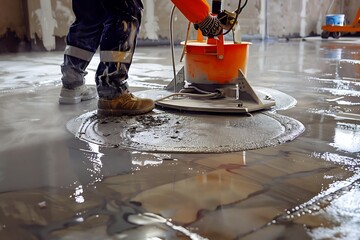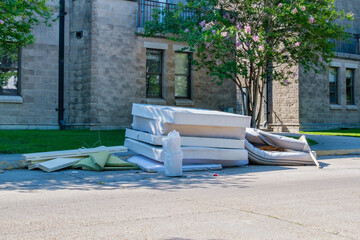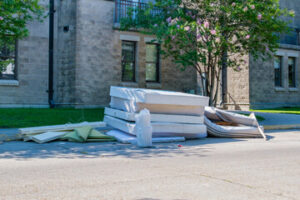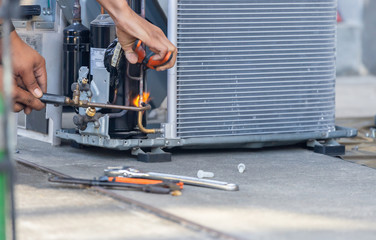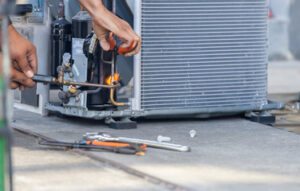Before starting your kitchen or bathroom remodel, find a contractor you trust. Research online reviews and look for certifications indicating their extensive experience.
Think about whether you plan to sell your home soon. If so, focus on the rooms that bring you the highest return on investment. That usually means upgrading your kitchen or main bathroom. Read on Stellar Kitchen and Bath Remodeling for more information.
A well-executed kitchen and bath remodeling project can significantly increase your home’s resale value. These high-traffic areas are often the first rooms potential buyers examine when touring homes, so a fresh, updated design is likely to grab their attention and set their expectations for your property’s overall quality.
The kitchen is the heart of your home, a multi-functioning space for cooking, eating, entertaining and relaxing with family and friends. It also is one of the most important selling points for your residence, with some experts reporting that a home’s sale price may be boosted by 20% or more when it features a newly updated kitchen.
Similarly, a spa-like bathroom is the ideal setting for unwinding from the day’s stresses, and a bathroom remodel can transform a basic utilitarian room into an inviting retreat.
While a kitchen or bath remodel will likely cost more upfront than other home improvement projects, the investment can pay off quickly. In fact, a new kitchen or bathroom can boost your home’s resale price by as much as 20%, meaning you will quickly recoup your costs and enjoy a higher return on your investment.
Kitchen and bath remodels can add value to your home by transforming dated fixtures into stylish, aesthetically appealing spaces that reflect your personal taste. Additionally, modern kitchen and bath designs can accommodate multiple design styles to suit a variety of lifestyles.
By using durable, eco-friendly materials and incorporating energy-efficient appliances, you can improve your home’s comfort while reducing your household’s environmental impact. The latest energy-saving appliances, low-flow faucets and showerheads, efficient lighting and insulation are just a few of the many options available.
In addition to boosting your home’s resale appeal, modern kitchen and bath remodels can help you save money on your utility bills each month.
When it comes to completing these vital remodels, a skilled professional can ensure your project is completed correctly and promptly. Additionally, a remodeling company can provide suggestions for how to minimize the disruption and inconvenience that often comes with kitchen and bath remodels. For example, you should decide early on how long you can live with contractors and tradespeople in your home while the renovation is underway.
Enhanced Functionality
Kitchens and bathrooms are central hubs of home activity, facilitating everything from daily cooking to personal hygiene and relaxation. Upgrading these spaces to better suit your needs helps you enjoy the space more thoroughly, making it easier to accomplish everyday tasks. This can be done through simple adjustments like installing new cabinets, removing clutter, or adding ergonomic fixtures that reduce strain on your body. Embedding eco-friendly options in your kitchen and bathroom also promotes healthy living, allowing you to cut down on energy and water usage while protecting the environment.
Kitchen and bathroom remodeling also provides a great opportunity to express your unique style, creating a harmonious aesthetic in your living spaces. Coordinating colors, materials, and designs allows you to create a seamless transition between the two rooms, whether your design vision is contemporary, traditional, or something in between. In addition, kitchen and bathroom remodels often involve opening up spaces through the installation of new walls or incorporating open-concept layouts to facilitate easy movement between these key areas and other parts of your home.
Lastly, the convenience and ease of use provided by updated kitchens and bathrooms fosters a happier, healthier lifestyle. Efficient storage solutions make it easier to keep food and other supplies organized, while hygienic surfaces and easy-to-clean finishes help prevent the growth of mold and bacteria. Similarly, a streamlined bathroom layout and luxurious fixtures can transform the space into a revitalizing retreat ideal for meditation, reading, and relaxation.
Enhanced functionality doesn’t just improve your own quality of life; it can also impact the lives of friends and family members who spend time in your home. A remodeled kitchen and bathroom can provide an inviting environment that encourages interaction and strengthens relationships. The calming atmosphere of a renovated space can also contribute to improved mental health by reducing stress levels and improving concentration.
Aesthetically Pleasing
A well-planned kitchen or bathroom remodel can add a touch of luxury and beauty to your home. Choosing the right colors, materials and design elements can transform your living spaces into stunning spaces where you can relax and enjoy time with family and friends.
The resulting aesthetics of your kitchen or bathroom should be in keeping with your personal style and reflect the way you live. While some homeowners may find it difficult to choose a design scheme, working with a reputable full-service designer can help you make informed choices that ensure your project turns out beautifully.
When working with a contractor, it is important to communicate the primary goals and scope of your project to avoid any surprises down the road. Start by discussing what changes you would like to see, and then create a budget based on your desired results. This will give you a clear understanding of how much you should expect to spend on the project, and it will prevent unexpected expenses from adding financial strain to your remodeling experience.
It is also important to establish the budget early on and share it with all parties involved in your project. This will ensure that everyone stays on track, and it will eliminate any confusion or disagreements about how to proceed with your remodeling project.
A kitchen and bathroom remodel should be an exciting, seamless process that provides a fresh new space for cooking, eating, relaxing, and entertaining. By leveraging the right technology and working with a trusted full-service design firm, you can be confident that your kitchen or bath will turn out exactly how you want it to look.
Kitchen and bath remodeling projects can be challenging, but they are well worth the effort when the end result is a beautiful, functional space that enhances your quality of life. By taking the time to consider the above benefits, you can rest assured that your investment in a kitchen or bathroom remodel will pay off in both increased comfort and property value.
Comfortable Living Spaces
Achieving the dream home you’ve always wanted doesn’t have to be stressful or overwhelming. When you work with a full-service design firm, the whole process is managed and streamlined. The result is a comfortable space that respects your goals and budget.
What’s more, a kitchen or bathroom remodel will improve your lifestyle, making the upgrade a wise investment for both short- and long-term benefits. The key is to identify the role each room plays in your life and determine which one will provide the greatest return on investment. Consider how much time your family spends in the kitchen and whether it meets your needs for entertaining, cooking, or socializing. Alternatively, you may want a cozy primary bath that’s the perfect retreat for soothing soaks and rejuvenating showers.
Choosing a design style based on the function of your space will also help you decide which room to prioritize for a remodel. For example, modern farmhouse kitchens are gaining popularity because they offer versatility for meal preparation and dining. Contemporary bathrooms, on the other hand, are becoming more focused on wellness and personal comfort. They’re designed for relaxation with soothing illumination, ergonomic furniture, and natural materials.
Once you’ve decided on the type of remodel you need, talk to a design professional about your vision and how it can be achieved within your renovation budget. Then, create a realistic timeline to ensure that the project is completed on time and within your comfort level.
A kitchen and bathroom remodel will both increase your property value and transform your living spaces into comfortable, functional havens. By discussing your renovation ideas with a trusted full-service designer, you’ll be on the road to a beautiful new kitchen or bathroom that will enhance your everyday living. To learn more about how our team can transform your home, contact us today to schedule a consultation.

